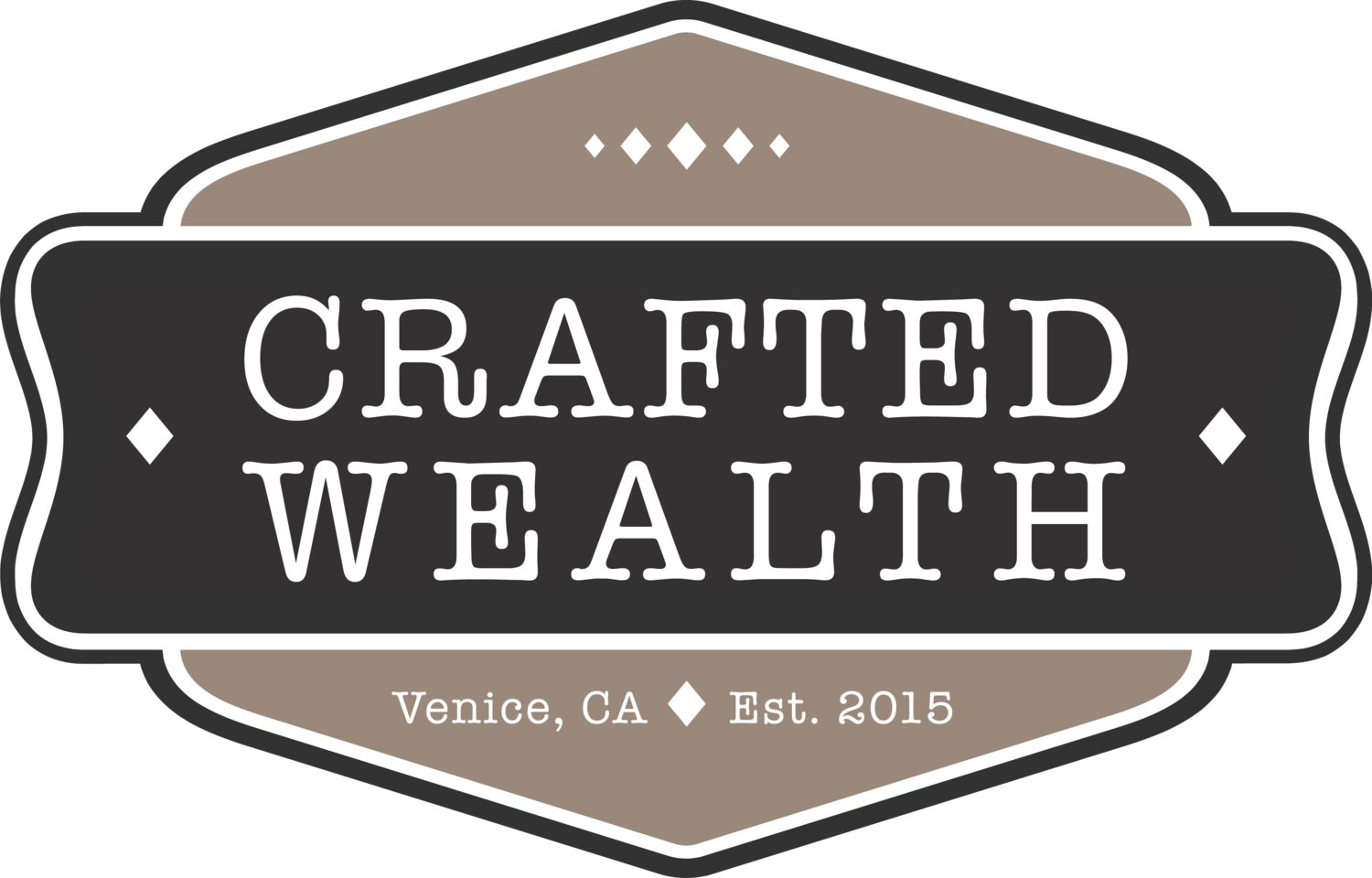Do I need a financial plan?
I have a bias on this topic and with good reason. Most people don’t know what financial planning is or what it accomplishes. To build yourself a financial plan, you first need to go through the financial planning process, which is where the real value is found!!
I’m going to share several real world examples of mistakes I found and fixed for my clients that will save them an enormous amount of stress and money over time. This will be a 4 part series: Cash Flow/Budgeting, Insurance, Taxes, and Investments. For each section, I’ll go through The Mistake, The Risk, The Fix, The Savings and then provide a Real World Example.
The first part was on Cash Flow/Budgeting here, second was on Insurance here, and last week was Tax Planning here.
Hopefully, through these examples, you can learn a little bit more about what the financial planning process can accomplish and a few red flags you can look for when going through your own finances.
#4 Investments.
Investments are usually the most exciting topic because investing always sounds sexy.
Expenses!!!
Example of a fund with 0.04% in annual expenses.
The mistake: Not looking at the internal expenses of the funds in your portfolio, random expenses of your 401k plan, management fees, or the cost of an up-front sales charge on A-Class mutual funds.
The risk: Expenses detract from the returns you will be receiving from investing. This is one of the few areas you can control when it comes to investing.
Example of a fund with 0.68% in annual expenses.
The fix: First thing you need to do is find the expense ratio of your existing funds in your portfolio. Grab one of your statements and look for the ticker symbol of each fund. Enter the symbol into the search engine of your choice, I find that yahoo finance works well. You will be able to locate the expenses of your fund noted as the “Expense Ratio”. If you’re investing in index funds you should have an expense ratio under 0.15% (lower is better), if you have actively managed funds, look for expense ratios under 0.50%. If you can find a morningstar link in your search, it should show you where the expenses of your fund fit compared to other similar funds.
Example of a fund with 1.29% in annual expenses.
The cost: This is huge! If you are comparing two large cap funds and one is 1.15% and the other is 0.15%, you can switch to the lower expense fund and save yourself 1% on an annual basis. On a $1,000,000 portfolio that is $10,000 a year. Spread that over thirty years and that is a significant amount of money that is not in your pocket. Expenses compound just the same as interest.
My most extreme real world example: Over the last year the highest expense fund one of my clients had was 1.12%. By looking through their Retirement Plans (401k, 403b, and 457) we were able to drop their entire portfolio expense to 0.06%. Large retirement plans often have some very low expense options where small retirement plans tend not to have the greatest options. Look at what you have and compare to other options available to you.
Asset Allocation
The mistake: Being unaware of tilts that your portfolios are subject to. Your asset allocation will dictate the returns you’re receiving and is one component of an investment strategy.
The risk: Tilting your portfolio to any one asset class can give you concentration risk and will subject you to the ebb and flow of that asset class. If you aren’t invested in many asset classes you are also likely to pick and choose when to get in and out of them. This is not a good strategy.
The fix: Look at your portfolio to see where your assets are held. Do you have positions in US Stocks? Are they spread among Large, Mid, and Small Cap? Do you have International exposure? What types of Fixed Income are you holding? Next see how much you are holding in each asset class to compare. What is your percentage in Equities? What is your percentage in Fixed Income?
Sometimes US Large Cap stocks will perform well! This is 2016.
The cost: The likelihood of long term over/underperformance is more likely in a wonky asset allocation. It is very difficult to go through these swings without considering making a change to your portfolio. Making a change to your investment strategy based on emotion is a poor approach and can have an enormous impact on the future of your portfolio.
Sometimes International Stocks will perform well! This is 2017 year to date.
My most extreme real world example: It’s a common recommendation in many books to invest in “only” the S&P 500 or one index at a time. While that may be a good strategy for someone, it’s probably not for everyone. You need to have a high risk tolerance to go through long swings of over/under performance. To mitigate the long swings of over/under performance you should consider having Mid Cap, Small Cap, International, Emerging Markets, and Fixed Income positions. Or at least know the up/downside of not being in them and make that decision for yourself. After discussing this strategy with a client that was planning to invest their money outside their 401k into the S&P 500, we found that they had a very low cost S&P 500 index fund available in their 401k (0.01%) which allowed us to explore alternate investment options for their non-401k investments that ultimately made their portfolio cheaper and more efficient!
Diversification
The mistake: Similar to asset allocation, a lack of differing investments. Looking for uncorrelated asset classes is ideal but can be difficult for traditional investments.
The risk: Concentrated portfolios can hold a lot of risk. There is an adage that “you get rich by concentration and you stay rich by diversification.” The flipside is that taking a concentrated risk can blow up your entire portfolio.
The fix: While looking at your portfolio for asset allocation, you can look to see how many positions you’re holding in each asset class. With broad market funds you will likely be well diversified unless you stick to one industry. For example, holding Facebook, Google, and Apple is not diversified (all tech) but holding Facebook, Google, Apple, Wal-Mart, GE, and Pfizer would be much more appropriate if the size of the holdings are similar. The alternative is to invest in a fund that invests in an index where you will get hundreds of companies for a very low cost.
The cost: Concentrated portfolios can have a very positive effect on your portfolio or a very negative effect on your portfolio. The cost of underperformance will be lower than average returns which will put you behind. The cost of over performance can create a bias of higher expected returns that may or may not continue. I can’t stress knowing your risks and your tolerance for them enough. Assuming low expenses and a comfortable asset allocation, your investment strategy is a largely personal preference.
S&P 500 vs Procter and Gamble over the last 5 years.
My most extreme real world example: I often see entire portfolios filled with individual Large Cap US positions with little thought given to anything else. The worst I’ve seen was someone that had their entire personal net worth invested in one US Large cap company. For several years that one stock outperformed their spouse’s diversified portfolio until it didn’t. In a serious way. There is an entire world to invest in and many opportunities to take advantage of. The benefit of investing across the globe is that you will be in some assets that do well while others don’t. This reduces portfolio volatility which is a really good thing for most investors.
Managing Wealth is about Managing Risk
Learning about markets and investments will make you a more comfortable and confident investor. Even if you decide not to do it on your own, you will have an understanding of what your advisor is talking about and your conversations together will be much more constructive.
As you can see, focusing on expenses, asset allocation, and diversification can have a drastic and positive impact on your investments. When you focus on areas you can control, you will become comfortable with what you can’t. This will increase the likelihood your portfolio will perform how the markets are performing.
So there you have it! I hope this has been a helpful series.
Do you like seeing real world examples? Let me know what you would like to hear about from me in the future!














